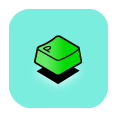https://github.com/soixantecircuits/piano
Desktop browser based on screen keyboard for touch screens
https://github.com/soixantecircuits/piano
electron keyboard keyboard-layout kiosk touch user-input virtual-keyboard
Last synced: 7 months ago
JSON representation
Desktop browser based on screen keyboard for touch screens
- Host: GitHub
- URL: https://github.com/soixantecircuits/piano
- Owner: soixantecircuits
- License: mit
- Created: 2015-09-22T15:00:29.000Z (over 9 years ago)
- Default Branch: master
- Last Pushed: 2022-12-04T12:46:54.000Z (over 2 years ago)
- Last Synced: 2024-11-21T18:42:35.867Z (7 months ago)
- Topics: electron, keyboard, keyboard-layout, kiosk, touch, user-input, virtual-keyboard
- Language: CSS
- Homepage: http://soixantecircuits.github.io/piano/
- Size: 983 KB
- Stars: 20
- Watchers: 11
- Forks: 3
- Open Issues: 24
-
Metadata Files:
- Readme: README.md
- Changelog: CHANGELOG.md
- License: LICENSE
Awesome Lists containing this project
README

⌨ Piano.js
> Customizable virtual keyboard written in plain JavaScript. See the [demo](http://soixantecircuits.github.io/piano).
The easiest way to put a keyboard in front of your users. Piano is a simple and extensible [On-Screen keyboard](https://en.wikipedia.org/wiki/Virtual_keyboard). It allows to provide elegant solution for virtual keyboard in a touch application.
Tested in Electron and Chrome kiosk.
[](http://standardjs.com/)
[](https://gitter.im/soixantecircuits/piano?utm_source=badge&utm_medium=badge&utm_campaign=pr-badge&utm_content=badge)
*Piano is still under active development (but has successfully been used in production work).*
## Table of contents
- [Table of contents](#table-of-contents)
- [Installation](#installation)
- [Installation with module bundler](#installation-with-module-bundler)
- [Installation without module](#installation-without-webpack)
- [Usage](#usage)
- [Positionning / styling](#positionning-styling)
- [Submit](#submit)
- [Animations](#animations)
- [Touch events](#touch-events)
- [Options](#options)
- [Demo](#demo)
- [Layouts](#layouts)
- [Development](#development)
- [To Do](#to-do)
## Installation
#### Get the packages
```bash
npm i -S piano.js
# or
yarn add piano.js
```
Or download [piano](piano.js) and at least the [default layout](layouts/default.js) .
#### Load the library
```js
// Add the CSS
require('piano.js/piano.css')
// Require piano wherever you want to use it
const Piano = require('piano.js')
// Choose the layouts you want
const azerty = require('piano.js/layouts/azerty')
const qwerty = require('piano.js/layouts/qwerty')
```
or
```html
```
#### Use it
```js
// Instantiate Piano
const keyboard = new Piano({
layouts: {
'azerty': azerty,
'qwerty': qwerty
},
slideContent: true
})
// See the 'Options' section for more details about this
```
```html
```
Optionally, you can listen to piano events in your code
```html
```
```js
document
.querySelector('[data-piano-event-id="do-stuff"]')
.addEventListener('do-stuff', doStuffCallback)
```
## Method
### addTarget()
`addTarget` method allow to dynamically add an input trigger for your on screen screen keyboard.
```
addTarget(element, options)
```
You need to provide a domElement and basic options object :
```
{
layout: 'azerty',
animationIn: 'bounceInUp',
animationOut: 'fadeOutUp',
scale: 1.0
}
```
So if you already have your keyboard instance and an element in the DOM namde `#dynamic-piano` you can:
```
let options = {
layout: 'azerty',
animationIn: 'bounceInUp',
animationOut: 'fadeOutUp',
scale: 1.0
}
keyboard.addTarget(document.querySelector('#dynamic-piano'), options)
```
## Usage
### Positionning / styling
You can define positionning with the `data-piano-position` attribute. You can use the following:
- `'left', 'center', 'right' -> x axis`
- `'top', 'middle', 'bottom' -> y axis`
For example:
```html
```
Or, with the `absolute` keyword, you can define absolute x and y positions:
```html
```
Default positions are `'center, bottom'`.
### Submit
You can define a `data-piano-event-id` attribute on your element and then listen to it.
For example, if you have a `data-piano-event-id="input-event"`:
```js
element.addEventListener('input-event', function (event) {
console.log('element with id "%s" submitted.', event.target.id)
})
```
### Animations
Piano provide has built-in but yet optionnal support for [Animate.css](https://daneden.github.io/animate.css/).
By default, it will add `fadeInUp` and `fadeOutDown` classes to your container. Just load the animate.css stylesheet and you'll have nice animations. You can also use the `data-piano-animation-in` and `data-piano-animation-out` attributes to define custom classes to toggle on hide/show.
You can also choose to create your own animations, and thus just use the classes toggled by piano to trigger them.
### Touch events
By default, Piano uses `click` events, even for touch devices. This is because any decent browser will emulate touch events into `click`, and touch events [make an approximation](https://developer.mozilla.org/en-US/docs/Web/API/PointerEvent/height) of the pointer's contact position. Of course, you can override this in the [options](#options).
## Options
You can pass options to your `new Piano()` call. Here they are:
- triggerEvents: **Array** of event triggers you want Piano to react (see [Touch events](#touch-events))
- slideContent: **bool** [true, false], _default to false_. Allow to define if the content should _slide_
- slideContainer: **string** ['.demo-container'], _no default_. Allow to define the part of the DOM you want to _slide_
- onHidden: **function**, _default to empty function_. Allow to call a function when the keyboard is hidden
- onBeforeHidden: **function**, _default to empty function_. Allow to call a function before the keyboard is hidden
## Layouts
*Soon.*
## Development
We use gulp to develop, to contribute to piano, just use `gulp develop`. It will watch src/piano and serve it over localhost on port 8080.
Create a `feature-[name-of-the-feature]` branch and make PR on the `dev` branch. Please use the [standard js coding style](https://github.com/feross/standard).
## To Do
- Support accentuation. (partial support for now).